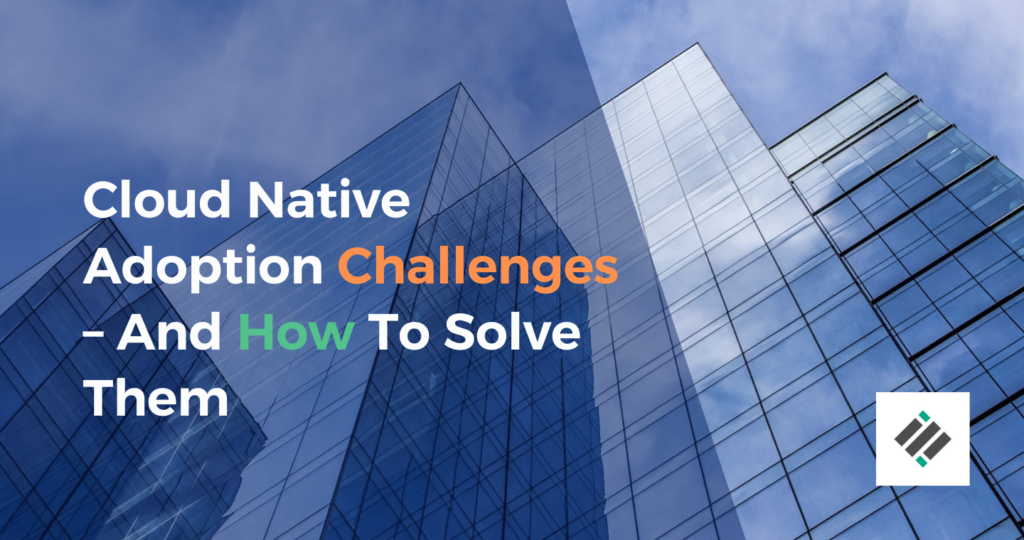Cloud native applications are taking over the tech world through its great agility, automation and scalability it provides for businesses.
Cloud native computing made the applications development more seamless and easier as developers can write and deploy the code in any cloud environment whether it is private, hybrid or public cloud.
While great in theory, cloud native is becoming more vast – by its growing number of competing and overlapping platforms and technologies and complex each day as it’s not always easy or straightforward to implement. Many companies overlook the challenges to migrate from monolithic applications to a cloud-native strategy
Let’s first understand what these challenges are, and the solutions to overcome them.
- New style of development
The biggest challenge companies face when building cloud-native applications is adopting old conventions and practices used for non-cloud-native development. This takes away some of the benefits of cloud-native development, such as execution speed and consistency, regardless of where your application is running in public, private, or hybrid clouds.
- Speed
Use a single DevOps platform that perfectly addresses the cultural and collaborative challenges of software delivery. Cloud-native architectures are designed to build resilient services that can be orchestrated and self-healing, but cloud-native development alone is not enough. The only proven way to achieve modern business velocity is with a DevOps platform that fully addresses the cultural and collaborative challenges of software delivery.
- “you build it, you run it” (YBIYRI) world
Building cloud-native apps in a “You build it, you run it” (YBIYRI) world is the hardest part of modern engineering. Cloud native means that the developer is also his DevOps engineer, a database administrator and network engineer. Fortunately, the tools and support for cloud native engineers have never been better, accelerating cloud native app development time.
- Creating cloud native application
One thing companies often underestimate is the highly automated and dynamic nature of an application’s environment in a cloud-native world. This means that the journey to cloud-native is not a simple lift-and-shift of your existing application architecture or development processes. Applications that don’t address this will perform poorly in a cloud-native environment, while applications built with these characteristics in mind from the beginning will perform well.
- Experimenting & testing of new approaches
The most challenging thing for companies is finding a balanced framework that guarantees a certain level of service and also experimentation and testing of new approaches. To get cloud-native development right requires finding the right abstractions for infrastructure, applications, and architecture. Focusing on workflows and the connection points between workflows acts as a feedback loop to aid adoption and ensure you’re making the right decisions.
- Design applications to withstand any kind of cloud outage
The biggest challenge in developing successful cloud-native applications is reliability. People often assume that moving to a cloud-native environment will make their applications much more reliable. Also, most public cloud providers say they are always on and never stop. However, most developers write applications that work well only on servers and computers, forgetting that sometimes service stops. It’s important to remember to design your application to withstand any kind of cloud failure.
- Recruitment and retention of technical talent
Finding and retaining the right technical talent that can continuously innovate and leverage these technologies is hard to find, but will pay dividends in the end to build native cloud applications that will succeed, adapt and solve customers’ problems.
This is espacially true since the race for technical talent is only set to intensify, with the demand for software developers estimated to increase to 22% between 2022 and 2030.
Solutions ?
To overcome cloud-native development hurdles and drive DevOps-based transformation, organizations should focus on:
Organizational alignment:
From executives to developers, organizations must unite everyone involved in the software delivery process to shift away from legacy systems and embrace new technologies that accelerate software delivery.
Cultural change:
Break down silos between decision makers, development, operations, and security teams and create a single source of truth with centralized communication and real-time collaboration.
Collaboration platforms:
Let go of DIY DevOps systems that hinder simplistic, repeatable processes, and choose a single platform approach that enables businesses to deliver software faster, more securely, at scale, and more cost-effectively.
Conclusion
Cloud-native computing is a journey, not a destination, and your journey needs to be well planned based on your needs, resources and the risks associated with using cloud-native technologies.
For a safe and successful journey, it also makes sense to equip yourself with the reliable assistance of an experienced technology professional, and that’s where we come in! We are a team of cloud experts who thrive when we turn your complex challenges into life-changing solutions.
What are you waiting for?


